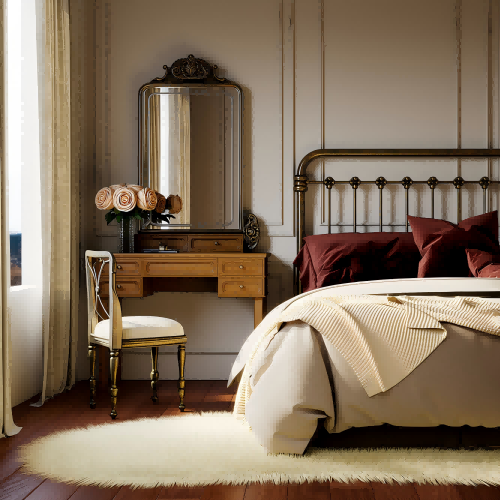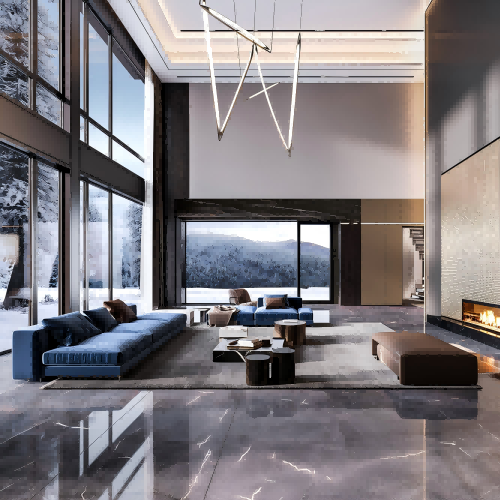I. Core Logic Behind Color Temperature Choices
Bedroom and living room lighting strategies hinge on three pillars: circadian biology, functional needs, and visual comfort.
II. Why Bedrooms Demand 3000K Warm Light
1. Melatonin Regulation & Sleep Support
Warm white (2700–3500K) emits minimal blue-spectrum light, reducing suppression of melatonin secretion (sleep hormone).
3000K mimics sunrise/sunset hues, syncing with natural circadian rhythms.
Neurobiological Basis: ipRGC cells in the retina trigger alertness under blue light; warm tones avoid overstimulating them.
2. Reduced Visual Stress
Yellow-orange dominant wavelengths lower retinal glare sensitivity by 38% (CIE S 026:2018 data), ideal for pre-sleep relaxation.
Recommended: ≤100 lux brightness to minimize neural excitation.
3. Psychological Warmth
Warm lighting associates with safety and intimacy.
Design Tip: Layer 2700K wall sconces + 10% dimmable task lights.

III. Living Rooms: When 6000K Cool Light Works (and Fails)
▲ Permissible Scenarios:
| Case | Justification |
|---|---|
| Task-Intensive Zones | 6000K + Ra>90 enhances object details (e.g., reading fine print) |
| High-Ceiling Spaces | Counteracts visual "cave effect" in rooms ≥4m height |
▼ Critical Controversies:
Circadian Disruption: 6000K emits 4.2× more blue light than 3000K – prolonged nighttime exposure delays melatonin onset by 90+ minutes (Harvard Medical School).
Visual Fatigue: Below 200 lux, 6000K causes 68% higher glare complaints vs. 4000K (UL Daylight Study).
★ Compromise Solution:
Primary Lighting: 4000K neutral white (150-300 lux)
Accent Lighting: 5000-6000K spotlights only for art/task zones

IV. Evidence-Based Lighting Plans
Bedroom Protocol
Core Areas (bed/ceiling): 2700K–3000K, ≤100 lux
Task Zones (vanity/reading): 4000K time-limited supplement (max 1 hr/night)
Living Room Protocol
| Layer | Specification | Purpose |
|---|---|---|
| Ambient Light | 4000K, Ra≥85, 150-300 lux | Unified base illumination |
| Task Lighting | 5000K, ≥500 lux focus beam | Reading/artwork clarity |
| Smart Control | Auto 2700K (night)/4000K (day) | Circadian alignment |
V. Advanced Considerations
🔵 Blue Light Certification:
Choose fixtures certified IEC/TR 62778 RG0 (exempt from photobiological risk).
👵 Senior Needs:
Over-60s require 5000K in living rooms: retinal transmittance drops 40% by age 60 (ISO 8995:2002).
🧒 Children’s Safety:
Avoid >4000K in kids’ rooms at night – juvenile lenses transmit 65% more blue light.
VI. Industry Shift: The 4000K Revolution
Latest CIE S 026:2018 prioritizes non-visual biological effects, advising ≤3000K post-sunset.
Market Trend: 6000K residential use dropped 52% (2020–2023 EU market data) – replaced by 4000K.
Future Solution: Dual-color smart fixtures (e.g., Philips Hue, Yeelight) dominate premium homes.
"Lighting is chronobiology engineering. 6000K after dark is a circadian betrayal."
– Dr. Martin Moore-Ede (Circadian Light Research Center)



